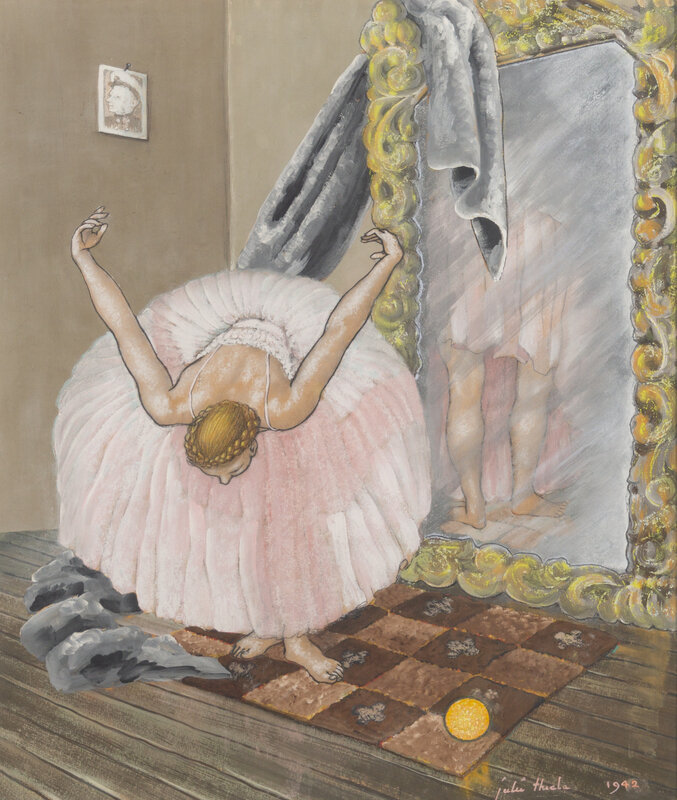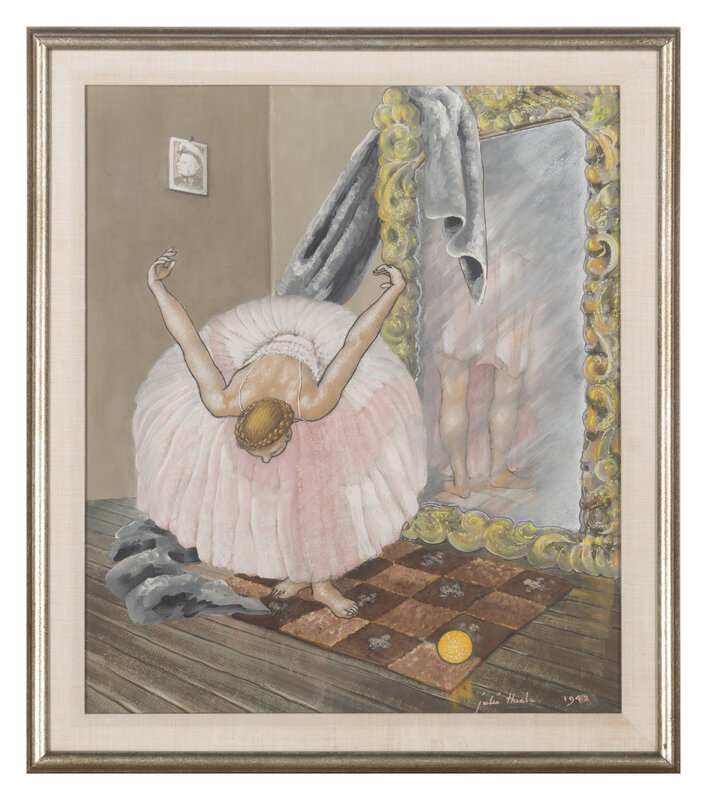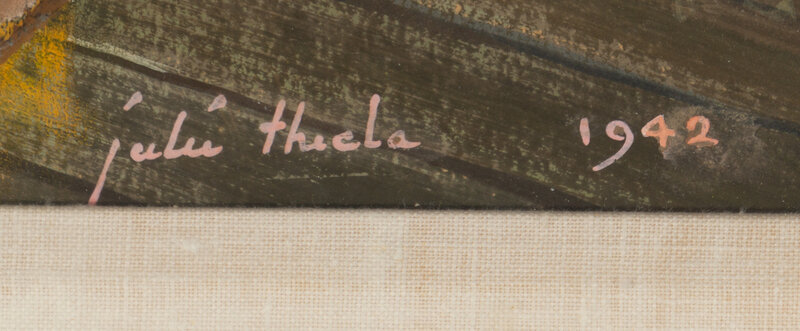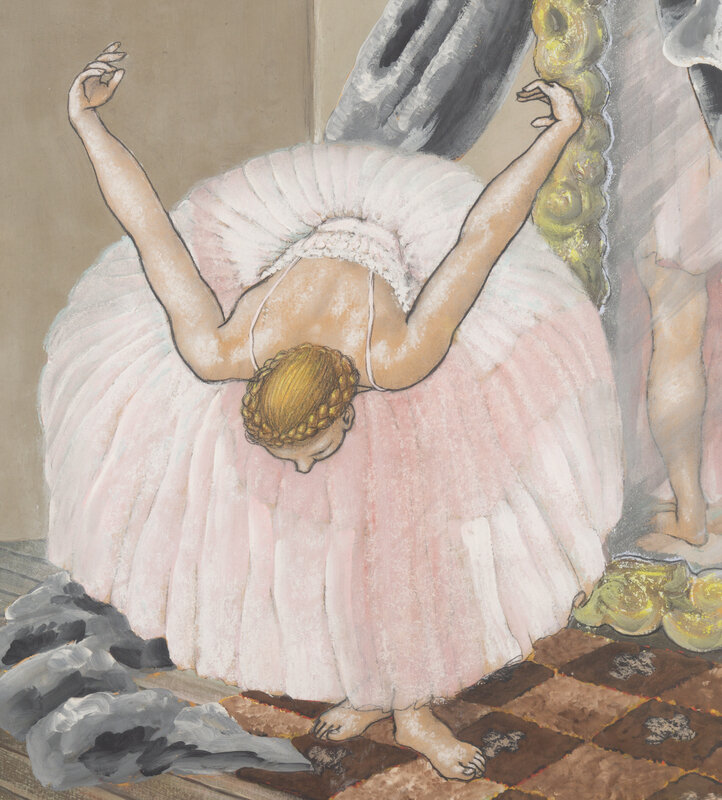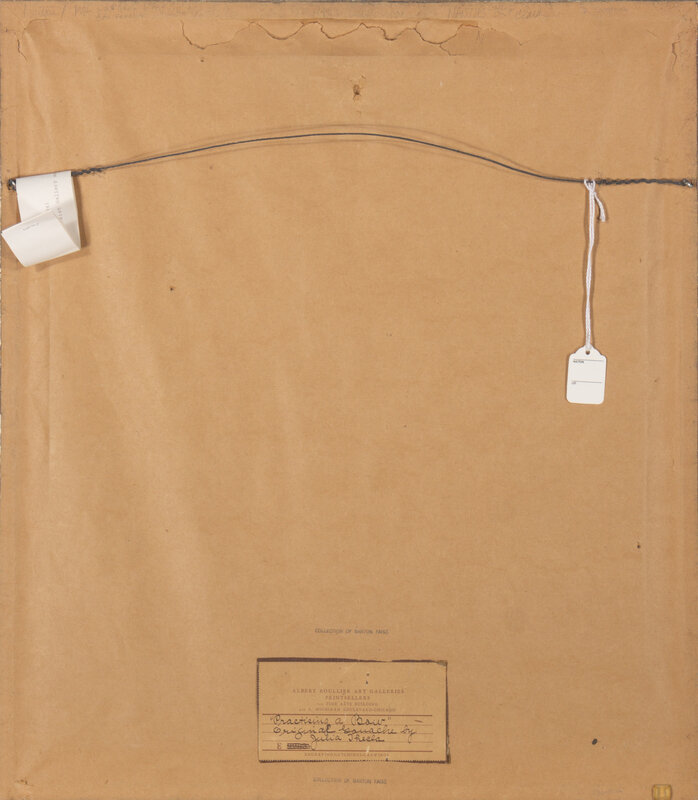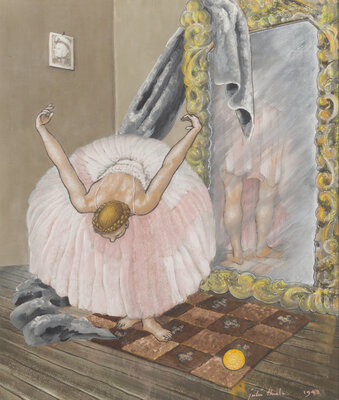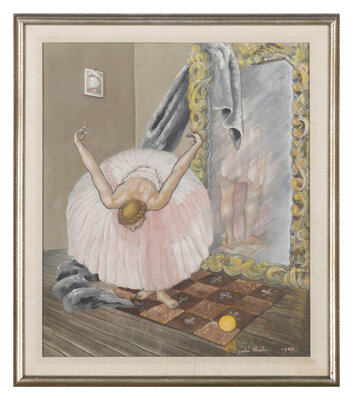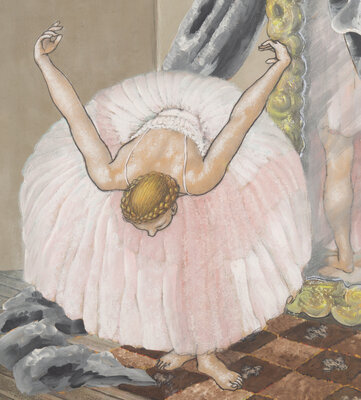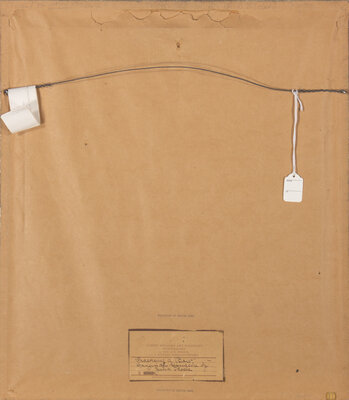Condition Report
Contact Information
Auction Specialists
Lot 44
Julia Thecla
(American, 1896-1973)
Practicing a Bow, c. 1941-42
Sale 1327 - Post War and Contemporary Art
Apr 24, 2024
10:00AM CT
Live / Chicago
Own a similar item?
Estimate
$15,000 -
25,000
Price Realized
$41,275
Sold prices are inclusive of Buyer’s Premium
Lot Description
Julia Thecla
signed Julia Thecla and dated (lower right)
20 x 17 inches.
Property from the Private Collection of Barton Faist, Chicago, Illinois
(American, 1896-1973)
Practicing a Bow, c. 1941-42
gouache, charcoal and pastel on board
signed Julia Thecla and dated (lower right)
20 x 17 inches.
Property from the Private Collection of Barton Faist, Chicago, Illinois
